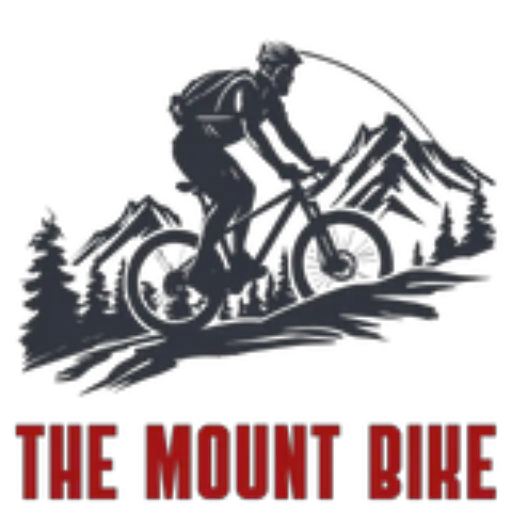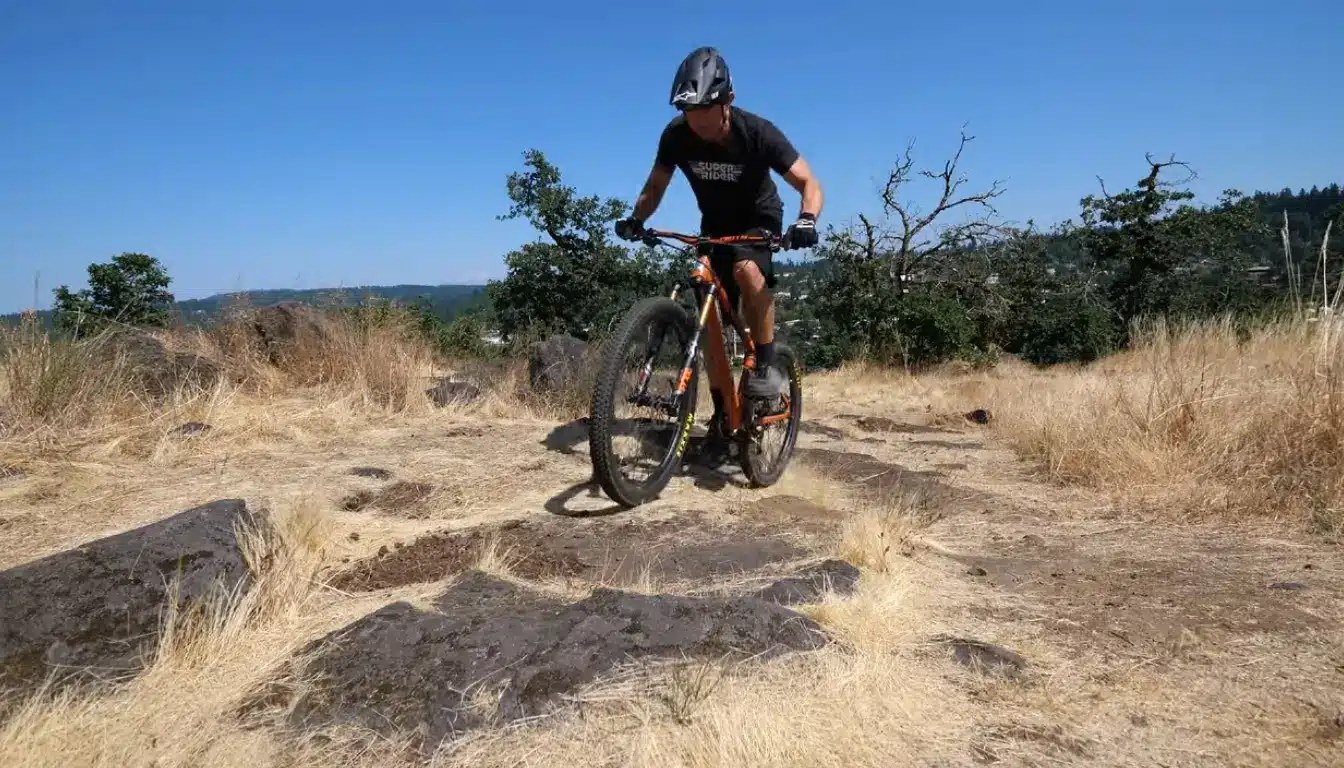Mountain biking is a great way to get in shape and have fun simultaneously. You can take it slowly and be cautious, or you can go all out and ride those hills like a ninja! Remember there are specific etiquette rules to follow when on your bike around other riders or pedestrians.
So what are the etiquette and basic skills of mountain bikes? Don’t stand on the trail, don’t skid, and don’t get too close to pedestrians while on the trail.
However, there are other skills that you will need to perform on your mountain bike. You can read more about Mountain Bikes 101 here:
Etiquette and Basic Skills for Mountain Biking
In the world of mountain biking, there are a few key rules that should be followed. Mountain biking is a lot of fun, but it does require careful attention to safety measures and etiquette. Here are the basics:
- Bike Park Etiquette
Now at a bike park, the cardinal rule, the one thing that you need to know is that you can’t block the trail. Don’t stand on the trail even if your bike breaks, even if you fall, get off the trail.
If you’ve to stop next to the trail as far to the side as you can because people are not expecting to see somebody on the trail at a bike park.
- Repair Your Bike on the Trail
Don’t be that guy that has to make a repair to their bike or has to put on all their gear after they arrive 10 minutes late.
This is going to make your friends hate you and it’s going to make them not want to come to a bike park with you.
- Skidding
Another fine point of bike parks comes down to skidding; skidding is the one trick everybody knows how to do; somebody gets a bicycle, locks up the rear brake, and skids.
It’s fun, but it’s also the thing that destroys trails. Most properly built trails don’t even get damaged by water, but skidding will dig your tire knobs into the tread and tear it up.
Then that loose dirt will get muddy and those holes will get deeper and deeper and somebody will have to come to fix it. So when you skid, you kind of ruin things for everyone.
- Multi-Use Trail
These trail systems come with their own set of additional considerations because there are other trail users on them. Multi-use trails like this one allow hikers and horseback riders in both directions.
But the main thing is you don’t want to create problems for another mouth. The bikers, some trails in this area have actually been closed down to mountain bikers because they just became too much of a problem.
Even if you don’t care about being rude to people, it reflects badly on all of us. And so when you’re out on the trails on a mountain bike, you’ve to represent us all.
So the type of riding you do on multi-use trails will be a little different than what you do at a bike park.
- Saddle Height
You should have a seat up so that your leg is more or less straight. You don’t want to pedal with your seat down. It’s terrible for your knees, and it’s inefficient.
But you might not know that if you’re going downhill for an extended period, you should probably have your seat down. Also, you should be standing up. This is called an attack position.
In an attack position, you’re going to have your body weight centered over the bike, you’re going to have your arms bent, and you’re going to be ready to absorb impacts.
- Manual
A manual is when you bring your weight back and go up on your rear wheel without pedaling, you’re just balancing there and not using the pedals to keep yourself up.
If you want to make the front of your bike very light, so it’s easy to pull up. So what you want to do is, before you go back, push down and snap your whole body back.
Now, this can feel a little bit unsettling. First, you’re afraid you’ll go off the back of the bike or flip over. So try it on a flat surface first and get comfortable with it.
- Proper Braking
So one of the essential techniques you need to learn to keep your bike in control is proper braking.
Now you’ve a brake lever on the right side of your bike and the left, depending on what part of your world you’re in. These will control the front or rear brakes constantly; you will want to use both of them simultaneously.
If your brakes are set up correctly, you can do feathering them, only applying them a little bit.
- Gears
The bike goes faster, and in the other direction, it has more torque, and it’s easier to pedal, but you also might realize that sometimes your gears make terrible clanging noises.
This is often caused by shifting under load; shifting under load happens when you’re climbing a hill or putting down power on the pedals. Then you realize you have to be in a lower gear, so you start shifting while putting tons of stress on the drive train.
At best, you’ll hear loud, terrible rattling noises, and at worst, you’ll damage your drive train. So the solution is don’t shift under load; try to plan.
- Look In Front
Always look in front of you. Many new mountain bikers look down at their tire, and when you look down your tire, you see what’s right in front of you, and it passes quickly.
When you look out ahead, you’re essentially slowing everything down. You can see more of the trail. If you look about, let’s say, 10 yards ahead of you, you’ll be able to ride everything much better.
Imagine if you’re driving your car and looking at the line right in front of you. Somebody would come out into the middle of the road, and you would hit them. So don’t do the same thing on your bike.
What Equipment Do I Need?
One piece of equipment that’s a must for mountain biking is a helmet. It’s important for your safety.
Other useful items are
- Wrist guards
- Knee pads
- Water bottle
- Backpack
- First aid
- Seatbelt
- Sunglasses
- Extra tube
- Bicycle lock
- Torch
- Multi-tool
Benefits of Mountain Biking
If you’re looking for a sport to keep you active and fit, mountain biking could be the answer. Not only it’s fun, but it also provides many health benefits.
- It can provide people with an effective form of exercise
- Give a mental escape from everyday life
- It’s a way to improve fitness and endurance
- An opportunity to experience the natural environment
- It can give you a chance to experience the outdoors
- An opportunity for better bonding with your family and friends
FAQs
What is etiquette skill?
There are many definitions of etiquette. Generally, it refers to the rules and standards for social interaction in a particular culture. Some say that etiquette is about behaving so that others will be impressed or notice you.
Why is basic etiquette important?
Etiquette may be seen as a set of guidelines or rules that help us to interact smoothly with other people. It helps us to get along better with others and to avoid unnecessary embarrassment or awkwardness. Etiquette also helps us show respect for other people.
How do you practice MTB skills?
Riding in groups, being safe on the trails, proper braking, etc. You may also be exposed to more advanced skills, such as negotiating obstacles.
Conclusion
Without etiquette and basic skills, mountain biking would be an easy task, as most of the action comes from gravity. As long as you know how to ride a bicycle and balance, using a mountain bike is really just an extension of these two skills.
Some basic etiquette can help you avoid any unnecessary conflicts while riding or lead up to more pleasant interactions with others who are out there on their own terms. So, it would be best to know these important skills before you hit the trails.
Meta Description
Don’t block the trail and skidding. Maintaining your saddle height, and proper use of brakes are some of the vital etiquette and basic skills of MTB riding.

I am Ryan Ford, a mountain biking enthusiast who loves to explore the outdoors. I also like to go on adventures with friends and anything else that involves being outside. I love my bike because it gets me out of the house and gives me an opportunity to enjoy nature.

